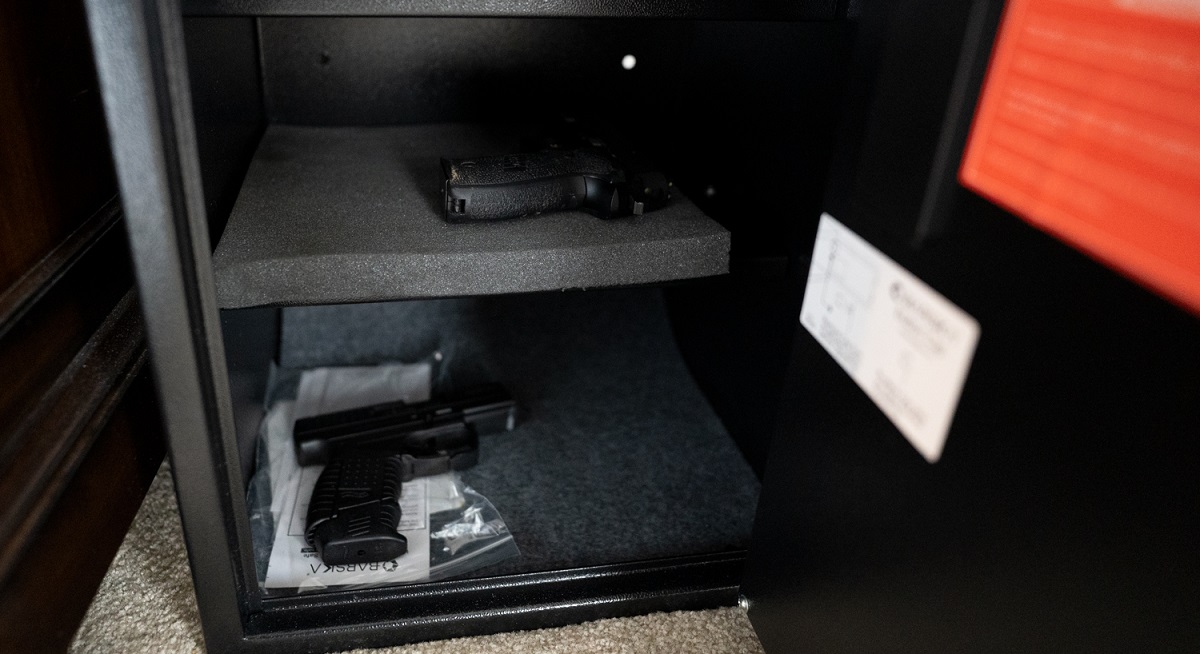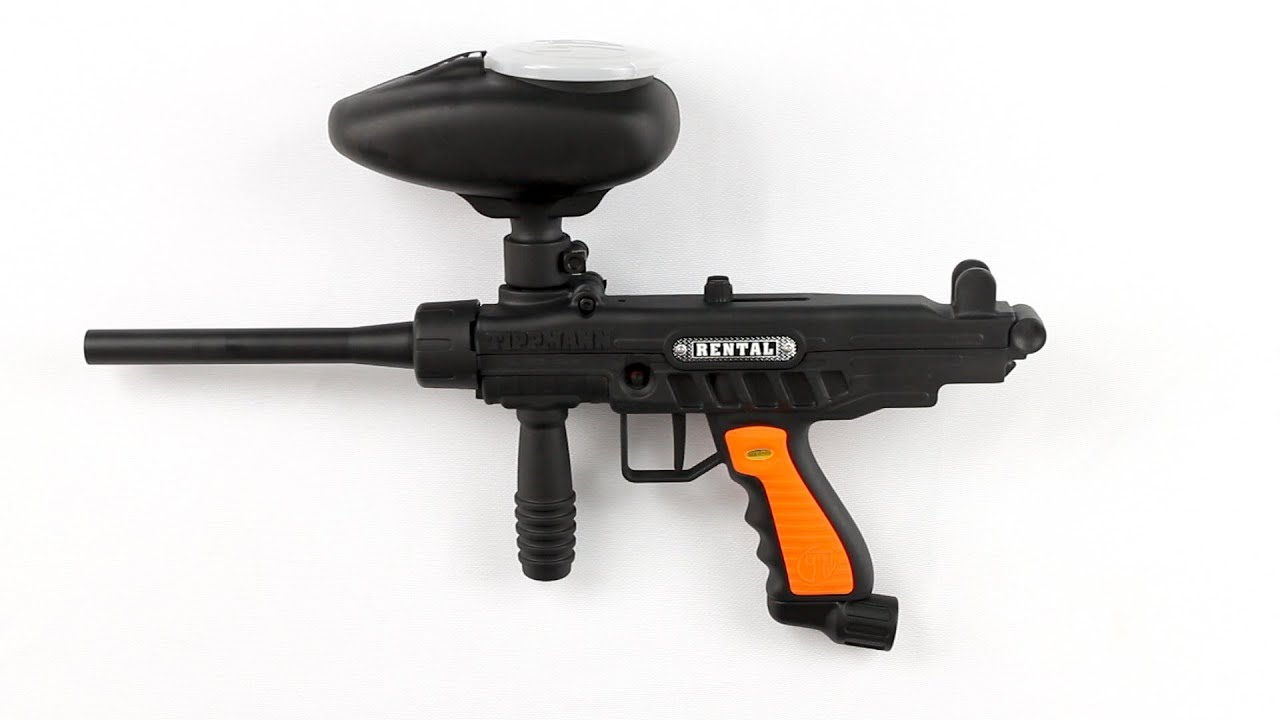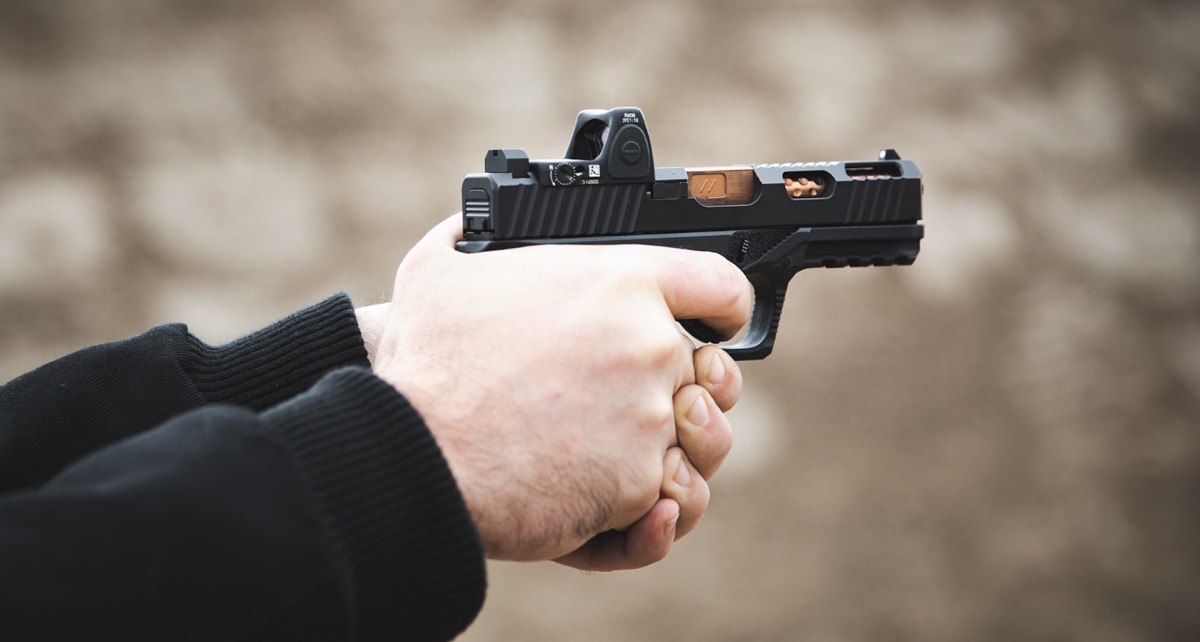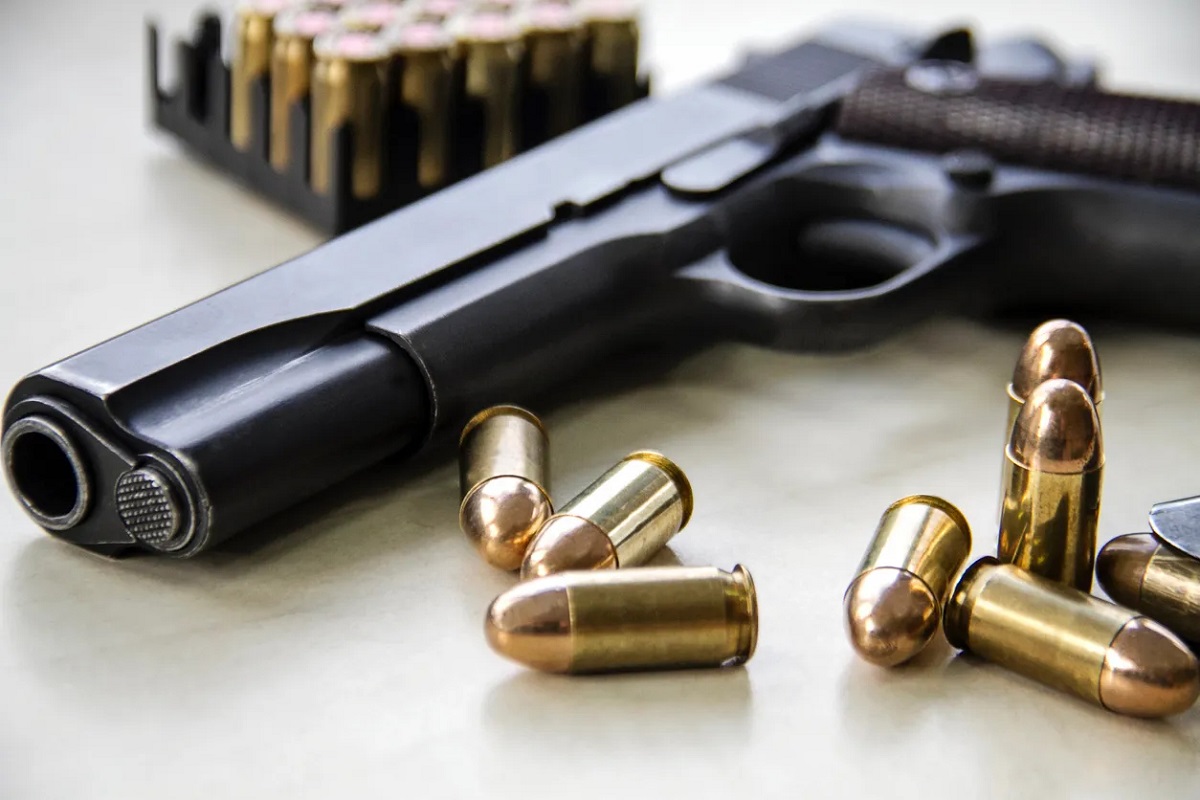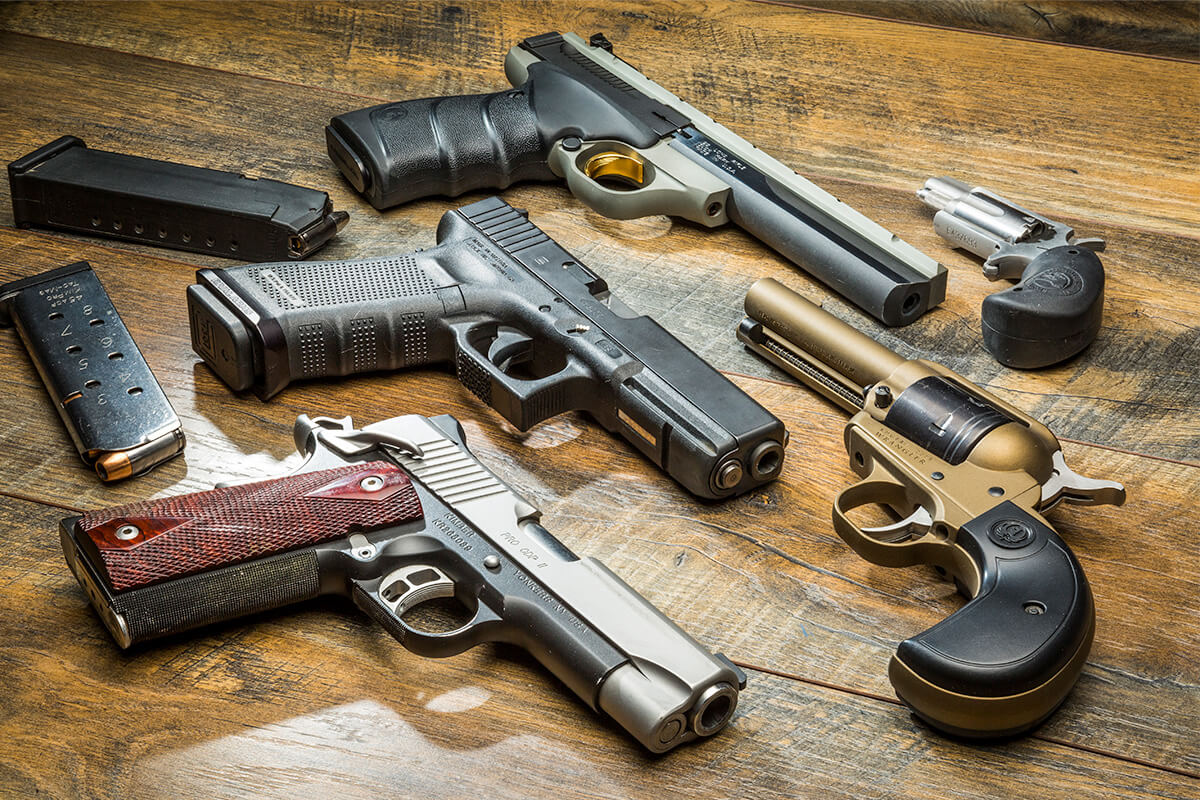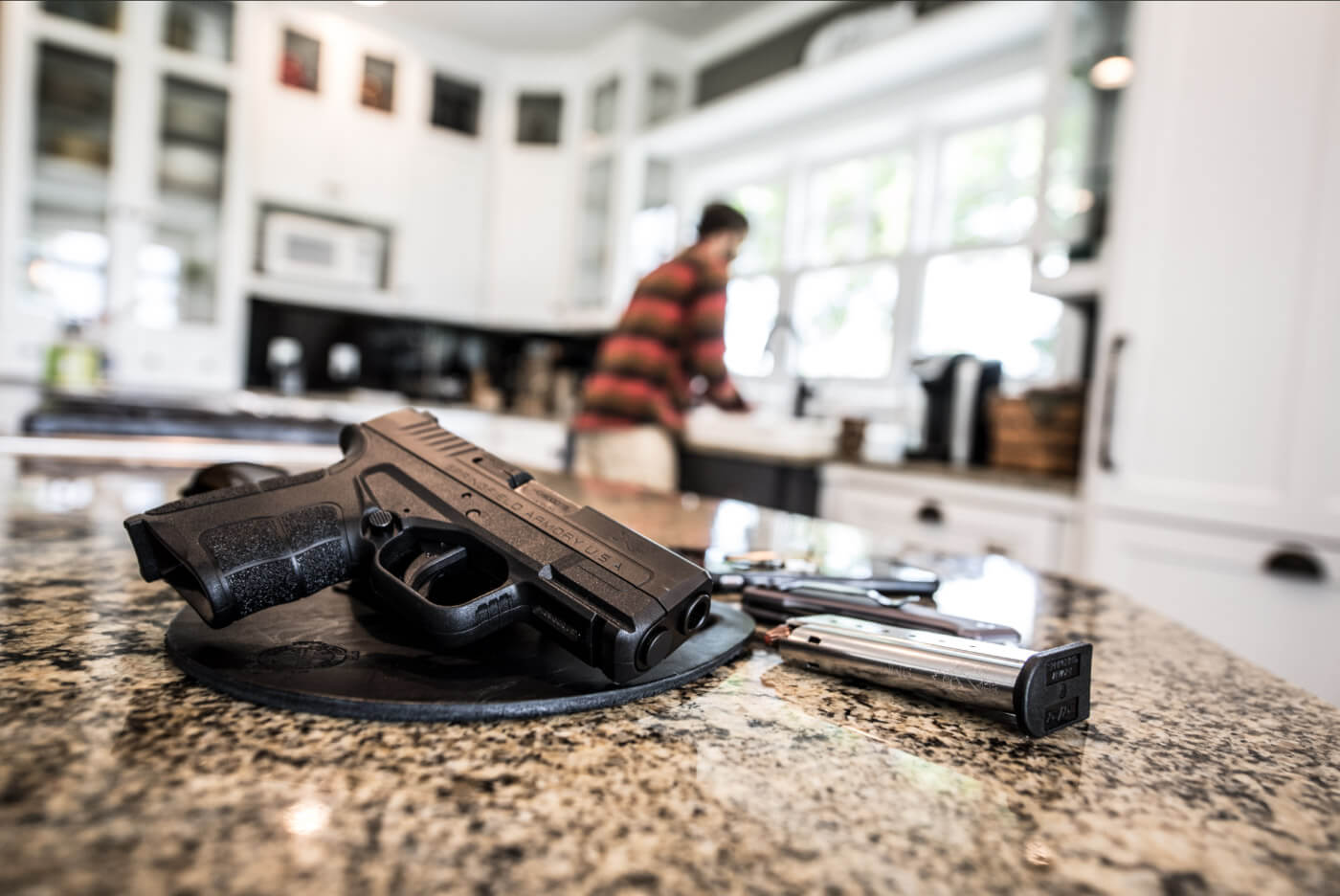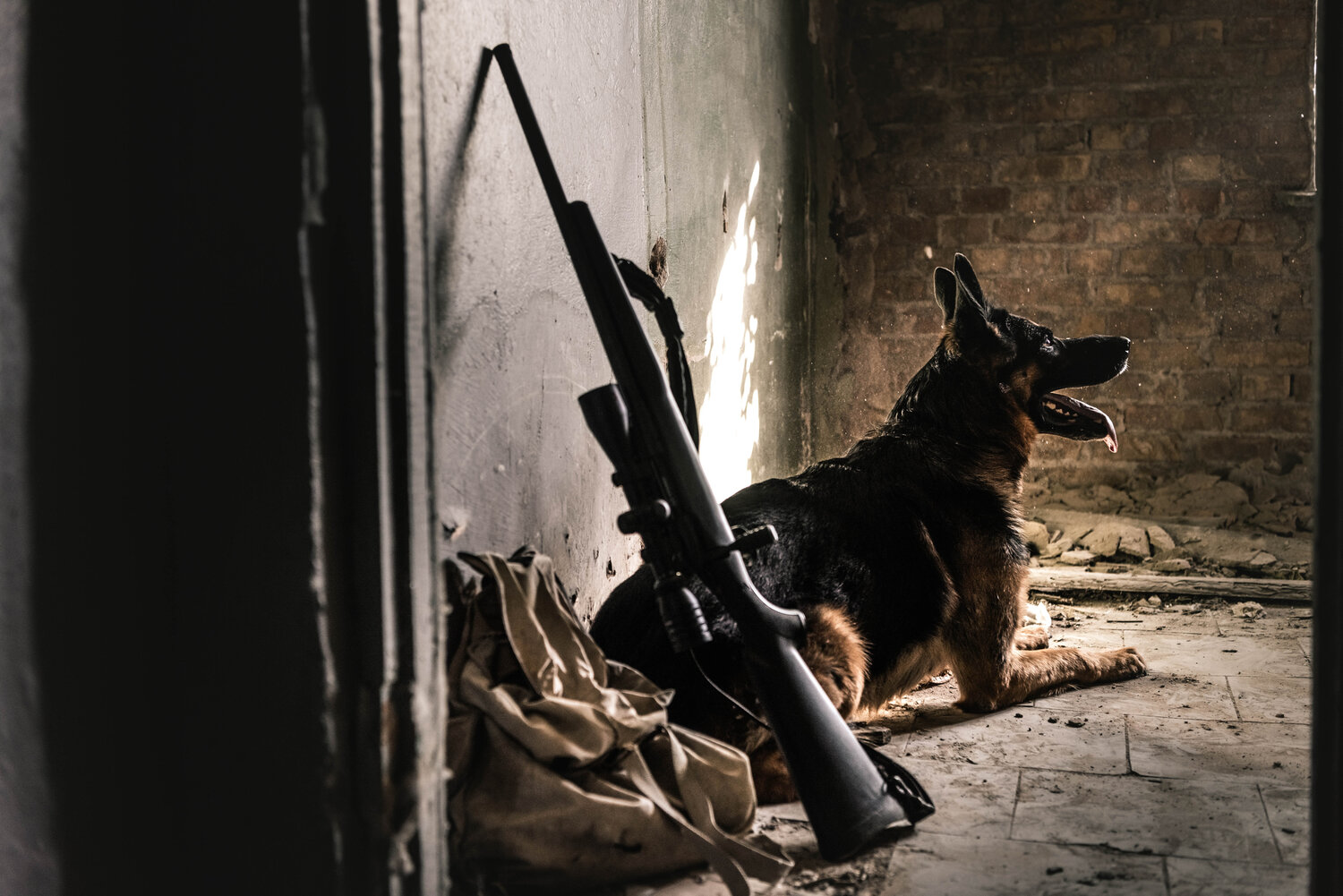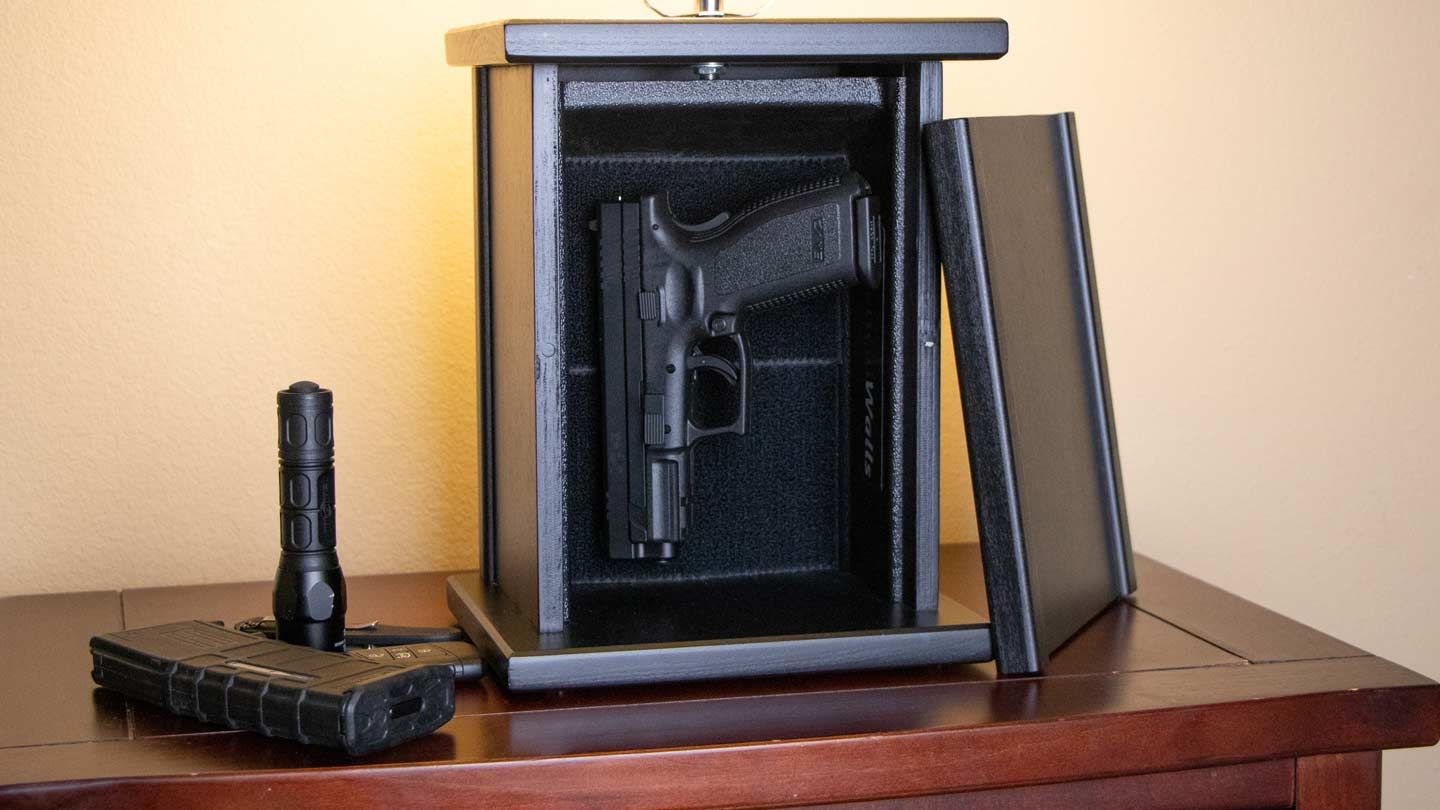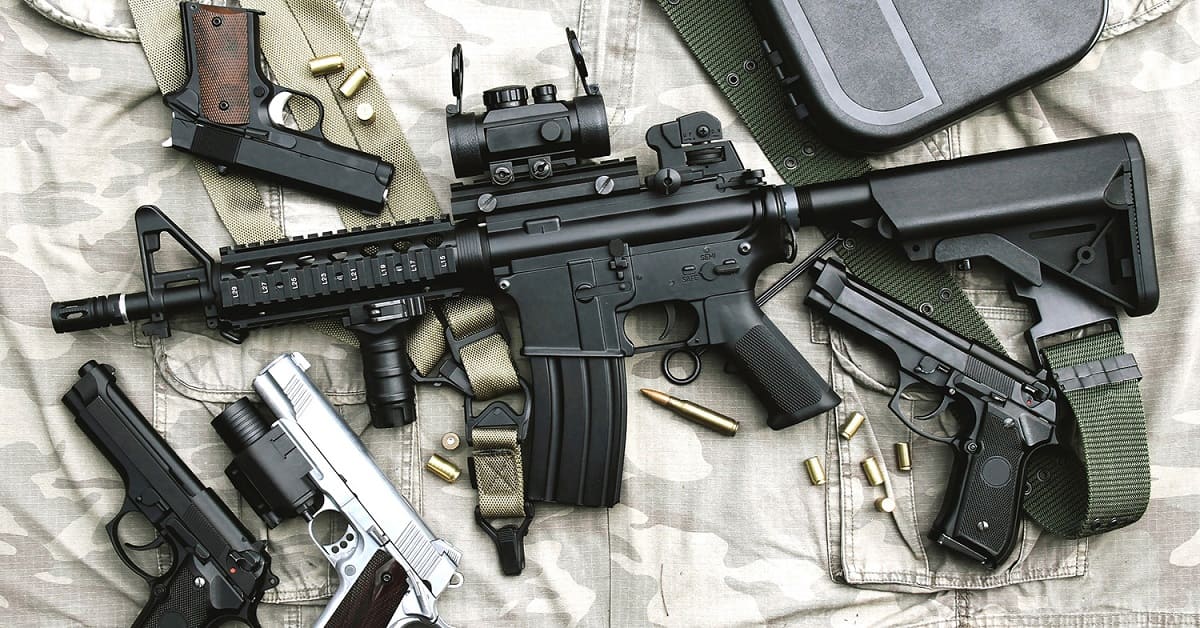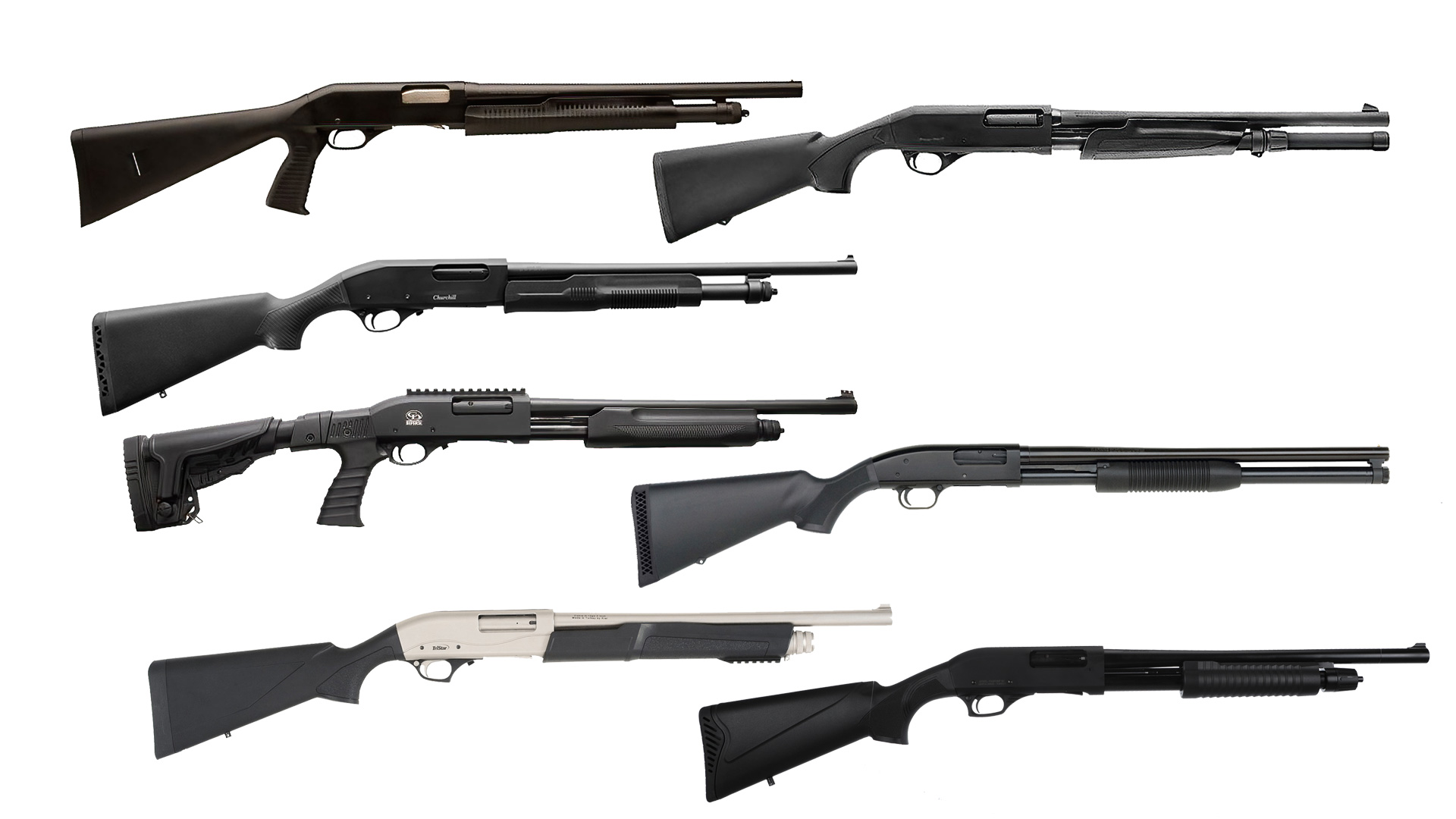Home>Home Security and Surveillance>What Is The Best Non-Gun Home Defense Weapon
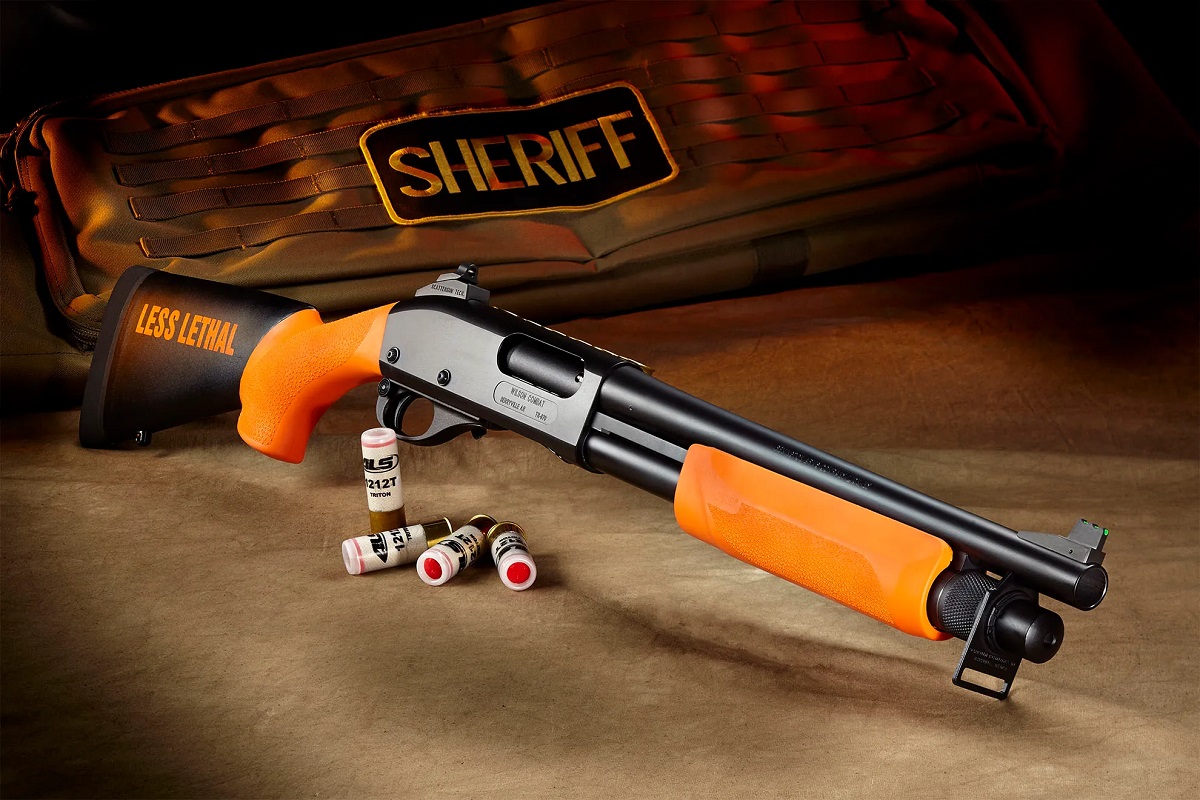

Home Security and Surveillance
What Is The Best Non-Gun Home Defense Weapon
Modified: March 6, 2024
Discover the best non-gun home defense weapon for optimal home security and surveillance. Explore effective alternatives to protect your home and loved ones.
(Many of the links in this article redirect to a specific reviewed product. Your purchase of these products through affiliate links helps to generate commission for Storables.com, at no extra cost. Learn more)
Introduction
When it comes to protecting your home and loved ones, having a reliable and effective home defense weapon is crucial. While firearms are a popular choice for many homeowners, some individuals may prefer non-lethal options for various reasons, including personal beliefs or legal restrictions. In this article, we will explore the best non-gun home defense weapons available on the market.
Choosing the right non-gun home defense weapon requires careful consideration of several factors. First and foremost, it is important to assess your comfort level and ability to handle different types of weapons. Some individuals may feel more confident using certain weapons over others, and it’s crucial to choose a weapon that you can wield effectively.
Another factor to consider is the legality of the weapon in your area. Make sure to research and understand the laws and regulations regarding non-lethal weapons in your jurisdiction. This will ensure that you stay within the bounds of the law while protecting your home and loved ones.
Additionally, take into account the potential effectiveness of the weapon in a home defense situation. Consider factors such as range, ease of use, and the incapacitating power of the weapon. You want a weapon that will provide you with a sense of security and deter potential threats.
Now, let’s explore some of the best non-gun home defense weapons available.
Key Takeaways:
- Non-gun home defense weapons like pepper spray, tasers, and alarm systems offer effective and non-lethal ways to protect your home and loved ones, providing peace of mind and security.
- When choosing a non-gun home defense weapon, consider factors such as legality, ease of use, and personal comfort. Combine multiple layers of security for a robust defense system.
Factors to Consider in a Non-Gun Home Defense Weapon
When choosing a non-gun home defense weapon, there are several important factors to consider to ensure that you make the right choice for your specific needs and circumstances. Here are some key factors to keep in mind:
1. Size and Portability: Consider the size and portability of the weapon. You want a weapon that is easy to handle and can be carried or stored conveniently in your home.
2. Range and Effectiveness: Evaluate the range of the weapon and its effectiveness in disabling or incapacitating an intruder. Look for a weapon that can effectively deter or immobilize an attacker without causing permanent harm.
3. Ease of Use: Consider your comfort level and familiarity with the weapon. Choose a weapon that you can confidently and effectively use in a high-stress situation.
4. Legality: Research and understand the laws and regulations surrounding non-lethal weapons in your area. Make sure the weapon you choose is legal to possess and use in your jurisdiction.
5. Psychological Impact: The mere presence of a non-gun home defense weapon can serve as a deterrent to potential intruders. Look for a weapon that has a strong psychological impact to discourage criminals from entering your home.
6. Training and Practice: If you decide to choose a non-gun home defense weapon, it is important to receive proper training and practice regularly to ensure you can use it effectively in a real-life situation.
7. Safety: Consider the safety features of the weapon, such as locks or mechanisms to prevent accidental discharge. It is crucial to prioritize the safety of yourself and your loved ones when using any type of weapon.
8. Cost: Evaluate the cost of the weapon and consider it in relation to your budget. While it’s important to invest in a reliable and effective weapon, make sure it fits within your financial means.
By considering these factors, you can make an informed decision when choosing a non-gun home defense weapon that aligns with your needs and preferences. Remember that the ultimate goal is to protect yourself and your loved ones while maintaining a sense of safety and security in your home.
Pepper Spray
One of the most popular non-gun home defense weapons is pepper spray. This self-defense tool contains a concentrated solution derived from chili peppers. When sprayed, it causes irritation and temporary incapacitation to the attacker’s eyes, throat, and respiratory system, giving you an opportunity to escape or seek help.
Pepper spray is compact, lightweight, and easy to carry, making it an ideal choice for personal defense. It is also relatively affordable and widely available for purchase online or at local stores.
When choosing a pepper spray, consider the spray pattern and range. Some sprays offer a narrow stream for targeting specific individuals, while others have a wider fog-like pattern to disperse in a larger area. The range will determine how far the spray can reach, giving you more flexibility in self-defense situations.
Pepper spray is legal in most jurisdictions, but it’s important to familiarize yourself with the specific laws in your area. Certain locations may have restrictions on the size or concentration of pepper spray that can be carried or used.
To use pepper spray effectively, aim for the attacker’s face and spray in short bursts. Aim for the eyes and mouth to cause maximum discomfort and temporary blindness. It’s crucial to practice using the spray beforehand to ensure proper aim and technique.
One key advantage of pepper spray is its non-lethality. It allows you to protect yourself without causing permanent harm or fatalities, making it a suitable option for those who prefer non-lethal self-defense weapons.
However, it’s important to note that pepper spray may not be effective against individuals who are under the influence of drugs or alcohol, or who have a high pain tolerance. In such cases, it’s important to have a backup plan or additional self-defense techniques at your disposal.
Overall, pepper spray is a versatile and widely accessible non-gun home defense weapon that provides a level of protection and personal safety. Consider its features, legality, and your comfort level with using it to determine if it’s the right choice for your home defense strategy.
Taser
A taser is another highly effective non-gun home defense weapon that utilizes electroshock technology to temporarily incapacitate an attacker. It works by delivering an electrical shock through two probes that are propelled towards the target.
Unlike pepper spray, a taser can be effective even if the attacker is wearing thick clothing or has a high pain tolerance. The electrical shock disrupts the attacker’s neuromuscular system, causing temporary muscle weakness and immobilization.
One of the key advantages of a taser is its range. Most tasers can reach targets from a distance of 15 to 25 feet, giving you a safe distance to protect yourself. They also have a built-in laser sight to aid in accurate targeting.
When considering a taser, it’s important to ensure that it is legal to possess and use in your jurisdiction. Some areas have restrictions on the voltage or usage of tasers, so familiarize yourself with the local laws before making a purchase.
Taser models are available in various sizes and designs. Some are compact and easily concealable, making them ideal for personal carry, while others are larger and more suitable for home defense purposes.
It’s crucial to receive proper training on how to use a taser effectively and safely. Understanding its features, operation, and proper targeting techniques will enhance your ability to defend yourself in a high-stress situation.
One important factor to consider is the cost of a taser. They tend to be more expensive than other non-gun home defense weapons, but they also offer a higher level of incapacitation and reliability.
Like any other self-defense weapon, a taser should be used responsibly and only in situations where there is a genuine threat to your safety or the safety of others. It’s important to remember that the goal is to incapacitate the attacker temporarily, not to cause permanent harm.
A taser provides a powerful option for non-lethal self-defense, offering you a means to protect yourself from potential threats effectively. Evaluate its features, legality, and your comfort level with using it to determine if a taser is the right choice for your home defense needs.
Baseball Bat
A baseball bat may not be specifically designed as a home defense weapon, but it can be an effective tool for self-defense in a pinch. It offers both offensive and defensive capabilities, making it a versatile option for protecting your home.
When using a baseball bat for self-defense, there are a few factors to consider. First and foremost, choose a sturdy and durable bat made from materials such as wood, aluminum, or composite. The bat should be of an appropriate length and weight for you to handle effectively.
One advantage of a baseball bat is its familiarity. Many people are familiar with the use of a bat in sports, making it easier to wield confidently in a high-stress situation. Its simple design and lack of complex mechanisms also make it reliable and easy to use.
When using a baseball bat for self-defense, aim for vulnerable areas of the attacker’s body, such as the head, knees, or abdomen. Striking with enough force can incapacitate or deter the attacker long enough for you to escape or call for help.
Keep in mind that using a baseball bat requires physical strength, and it may not be suitable for everyone. It may also require close proximity to your attacker, which can be risky. Evaluate your personal capabilities and comfort level in using a bat for self-defense.
One consideration when using a baseball bat is the potential escalation of violence. While a bat can be an effective deterrent, it may also provoke a more aggressive response from an attacker. It’s crucial to prioritize your safety and consider other non-lethal options or the use of a bat as a last resort.
Overall, a baseball bat can serve as a viable non-gun home defense weapon that combines both offensive and defensive capabilities. Its simplicity, accessibility, and versatility make it a popular choice among homeowners for personal protection. Consider your physical strength, comfort level, and potential risks before choosing a baseball bat as your home defense weapon of choice.
Read more: Home Defense: When A Gun Is Not Enough
Stun Gun
A stun gun is a non-lethal self-defense weapon that delivers an electrical shock to an attacker upon contact. It is designed to temporarily disable the attacker and give you the opportunity to escape from a dangerous situation.
Stun guns are available in various sizes and designs. They typically have two electrodes that deliver the electric shock when pressed against the attacker’s body. Some stun guns also come with additional features like built-in flashlights or sound alarms for added personal security.
One advantage of a stun gun is its effectiveness, even through thick clothing. The electrical shock disrupts the attacker’s nervous system and causes muscle contractions, disorientation, and pain. This temporary incapacitation provides you with precious seconds to escape or call for help.
When choosing a stun gun, consider factors such as voltage, size, and ease of use. Higher voltage stun guns deliver a more powerful shock, but they may also be bulkier. Opt for a stun gun that fits comfortably in your hand and is easy to operate in high-stress situations.
It’s important to check and comply with the legal restrictions on stun gun ownership and usage in your area. Some jurisdictions have age restrictions or require permits for possession, so ensure that you are familiar with the local laws before acquiring a stun gun.
Using a stun gun effectively requires close proximity to the attacker. Aim for sensitive areas such as the torso, neck, or thigh to maximize the impact of the shock. Practice using the stun gun in a safe and controlled environment to familiarize yourself with its operation.
While stun guns are generally safe, it’s important to exercise caution and use them responsibly. Avoid using them on individuals with heart conditions or other medical issues that may be exacerbated by electrical shocks. Additionally, always consider your personal safety and use a stun gun as a means of self-defense rather than as a tool for confrontation.
Stun guns can be an effective non-gun home defense weapon, providing you with a means to protect yourself without causing permanent harm. Evaluate its features, legality, and your comfort level with using it to determine if a stun gun is the right choice for your personal safety needs.
A baseball bat or a sturdy flashlight can be effective non-gun home defense weapons. Keep them accessible and practice using them for self-defense.
Crossbow
A crossbow is a powerful and versatile non-gun home defense weapon that has been used for centuries. It combines a bow-like mechanism with a firearm-style stock and trigger, allowing for accurate and deadly shots over considerable distances.
One of the main advantages of a crossbow is its range and stopping power. It can shoot projectiles, typically called bolts or quarrels, with high velocity and accuracy, capable of taking down an intruder with a single shot.
Crossbows come in various sizes and draw weights. The draw weight determines the force required to pull back the bowstring, which ultimately affects the speed and power of the projectile. Consider your physical strength and capabilities when selecting a crossbow with an appropriate draw weight for you.
When using a crossbow for home defense, it’s essential to prioritize safety. Crossbows should be stored securely, out of reach of unauthorized individuals, and handled responsibly to prevent accidents. Ensure that you receive proper training and familiarize yourself with the operation and safety features of the specific model you choose.
It’s important to check and comply with the legal regulations regarding crossbows in your area. Some jurisdictions have restrictions on the possession, usage, or hunting with crossbows, so be sure to understand and abide by the local laws.
Using a crossbow effectively requires practice and skill. Regular target practice will help you become familiar with the necessary aiming techniques and improve accuracy. Consider joining a local archery club or seeking professional instruction to enhance your proficiency with a crossbow.
While a crossbow offers significant stopping power, it’s essential to remember that it is a lethal weapon. Consider the potential consequences and legal implications when using a crossbow for self-defense. It should only be used when there is an imminent threat to your safety or the safety of others.
Overall, a crossbow can be an effective non-gun home defense option for those comfortable with using and handling such a weapon. Its range, power, and accuracy make it a formidable choice for deterring and incapacitating intruders. However, due to its lethal nature, careful consideration, training, and legal compliance are necessary before deciding to employ a crossbow for home defense.
Knife
A knife is a versatile and easily accessible non-gun home defense weapon. It has been used for self-defense purposes for centuries and remains a popular choice for many individuals due to its simplicity and effectiveness.
When selecting a knife for self-defense, there are a few factors to consider. Blade length, handle grip, and overall size are important considerations. Ideally, choose a knife that is easy to handle, fits comfortably in your hand, and allows for precise control and maneuverability.
There are different types of knives suitable for self-defense, such as fixed-blade knives or folding knives. Fixed-blade knives offer durability and strength, while folding knives provide easy concealability. Consider your personal needs and preferences when choosing the right knife for your home defense strategy.
Training and familiarity with knife techniques are crucial for effective use. Proper knife skills can enhance your ability to disable or deter an attacker effectively. Seek professional instruction or self-defense classes to develop the necessary skills and techniques.
It’s important to remember that a knife is a deadly weapon and should be used responsibly and within the bounds of the law. Understanding the legal regulations regarding knife possession and usage in your area is essential.
When using a knife for self-defense, aim for vulnerable areas such as the groin, neck, or other soft tissue areas. Quick, precise strikes can incapacitate an attacker and provide an opportunity to escape. However, it’s crucial to prioritize your safety and only use a knife as a last resort when there is an immediate threat to your life or the lives of others.
As with any self-defense weapon, it’s essential to exercise caution and consider the potential risks and consequences. Close-quarter combat with a knife can quickly escalate a dangerous situation, and it’s important to evaluate your physical capabilities and comfort level in using a knife for self-defense.
Overall, a knife can be an effective non-gun home defense option, providing a portable and potentially lethal means to protect yourself. Evaluate its size, handle grip, legality, and your comfort level with handling a knife to determine if it’s the right choice for your home defense needs.
Pepper Gel
Pepper gel is a modern and highly effective non-gun home defense weapon that offers an alternative to traditional pepper spray. It is similar to pepper spray but in a gel form rather than a liquid spray.
One of the main advantages of pepper gel is its increased range and accuracy. The gel formula allows for a more targeted and controlled application. It sprays in a continuous stream, minimizing the risk of blowback or dispersing in unintended areas.
Pepper gel also has a longer range compared to pepper spray, typically around 15-20 feet. This distance can provide added safety and give you more time to react and protect yourself from an attacker.
The gel formula also reduces the risk of cross-contamination, making it a suitable choice for indoor use. It adheres to the target upon contact and is less likely to affect bystanders or spread through ventilation systems, as it doesn’t atomize like spray.
Another advantage of pepper gel is its effectiveness against individuals under the influence of drugs or alcohol. The thick gel substance sticks to the skin, making it difficult to wipe off, and delivers a potent and concentrated dose of pepper irritants to immobilize an attacker.
When choosing a pepper gel, consider factors such as size, capacity, and ease of use. Opt for a canister that is comfortable to hold and easy to operate, especially in high-stress situations.
It’s important to be aware of the legal regulations surrounding pepper gel in your area. Verify the legality of owning and using pepper gel, including any restrictions on size or concentration, to ensure compliance with local laws.
As with any self-defense tool, proper training and practice are essential. Familiarize yourself with the operation of the pepper gel canister and practice deploying it effectively and efficiently.
When using pepper gel, aim for the attacker’s face, particularly the eyes and mouth, for maximum effect. Maintain a distance and aim for the attacker’s face while ensuring your own safety.
Pepper gel provides a practical and potent non-gun home defense option for personal safety. Consider its range, accuracy, and legal status in your area, along with your comfort level in using it, to determine if pepper gel is the optimal choice for your self-defense needs.
Alarm Systems
Alarm systems are an essential component of home security and serve as an effective non-gun home defense tool. They act as a deterrent, alerting you and others to potential intruders and providing an early warning system in the event of a break-in.
Modern alarm systems are equipped with various sensors and features designed to detect unauthorized entry. These can include door and window sensors, motion detectors, glass break sensors, and security cameras.
When considering an alarm system, it’s important to assess your specific needs and the layout of your home. Evaluate the size of your property and the number of entry points that require monitoring. This will help you determine the type and number of sensors needed for comprehensive coverage.
Wireless alarm systems have become increasingly popular due to their ease of installation and flexibility. They don’t require complicated wiring and can be easily customized and expanded as your security needs evolve.
Alarm systems are typically monitored by a professional security company or can be self-monitored through mobile apps. Monitored systems provide an added layer of protection, as they alert the monitoring center or emergency responders in case of a triggered alarm.
Some alarm systems also offer home automation features, allowing you to integrate security with other smart devices in your home. This can include remote control of security cameras, door locks, and even the ability to arm or disarm the system from your smartphone.
Alarm systems can be an effective deterrent to potential intruders. The presence of visible alarm system signage can discourage criminals from targeting your home, knowing that any attempted break-in will activate a loud alarm and potentially attract attention.
In addition to deterring intruders, alarm systems provide peace of mind and a sense of security for homeowners. Knowing that your home is protected and that you will be alerted in case of any suspicious activity can significantly reduce anxiety and stress.
It’s important to regularly maintain and test your alarm system to ensure that it is functioning correctly. This includes checking batteries, sensors, and updating any necessary software or firmware.
While alarm systems are highly effective, it’s crucial to remember that they are just one component of a comprehensive home security strategy. They should be combined with other measures such as sturdy locks, outdoor lighting, and proper management of access points.
Overall, alarm systems offer a reliable and non-lethal means of home defense by providing early detection and alerting homeowners to potential threats. Consider your specific security needs and budget to determine the best alarm system for your home.
Conclusion
When it comes to home defense, there are numerous non-gun options available to ensure the safety and security of your household. Each of these weapons, including pepper spray, tasers, baseball bats, stun guns, crossbows, knives, pepper gel, and alarm systems, vary in purpose, range, and effectiveness.
Pepper spray and gel provide a convenient and cost-effective solution for temporarily incapacitating an attacker, while tasers offer a longer range and greater stopping power. Baseball bats and knives can serve as versatile tools for both offense and defense, but require physical strength and skill to wield effectively.
Stun guns deliver electrical shocks to immobilize attackers, while crossbows offer long-range accuracy and power. Finally, alarm systems provide a comprehensive security solution, acting as a deterrent and alerting you to potential intruders.
When choosing a non-gun home defense weapon, it’s important to consider factors such as legality, ease of use, range, and personal comfort. Remember to adhere to local laws and regulations regarding possession and usage to ensure you stay within the boundaries of the law.
Additionally, prioritize your safety and the safety of others when utilizing these weapons. Regular training, practice, and proper maintenance are essential for effectively deploying and utilizing non-gun home defense weapons.
Ultimately, the best non-gun home defense weapon depends on your personal preferences, skills, and comfort level. Consider factors such as your home’s layout, your physical strength, and any legal restrictions in your area when making your decision.
However, it’s important to remember that non-gun home defense weapons are just one aspect of a comprehensive home security strategy. They should be complemented by other measures such as secure doors and windows, outdoor lighting, and maintaining strong relationships with neighbors.
By combining multiple layers of security, you can create a more robust and effective defense system for your home. Assess your individual needs, research the available options, and choose the non-gun home defense weapons that best align with your lifestyle and personal values.
With the right non-gun home defense weapons in place, you can enhance the safety and protection of your home and loved ones, providing peace of mind and a secure living environment.
Frequently Asked Questions about What Is The Best Non-Gun Home Defense Weapon
Was this page helpful?
At Storables.com, we guarantee accurate and reliable information. Our content, validated by Expert Board Contributors, is crafted following stringent Editorial Policies. We're committed to providing you with well-researched, expert-backed insights for all your informational needs.
